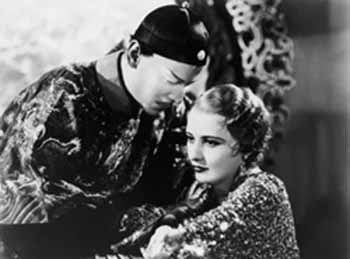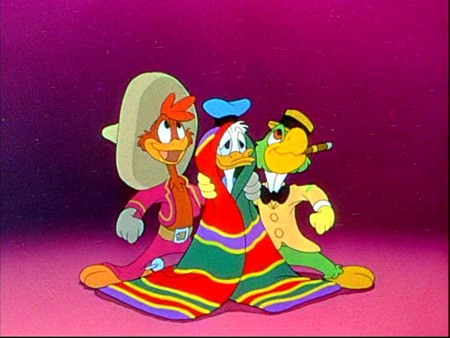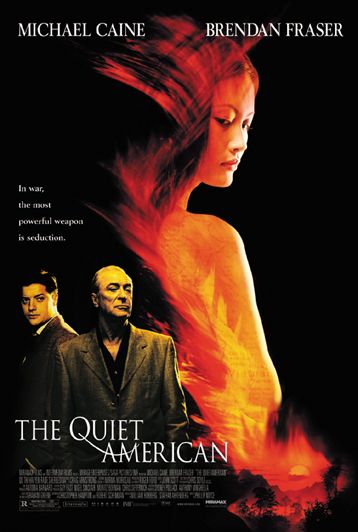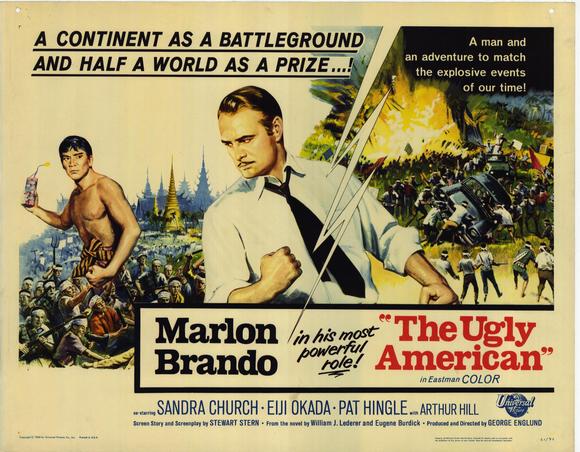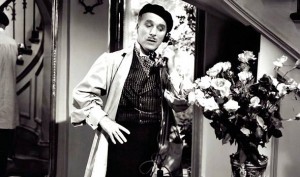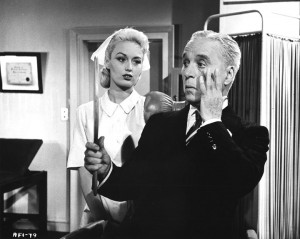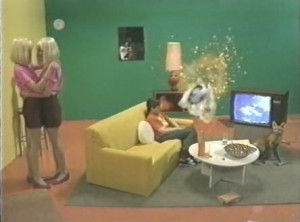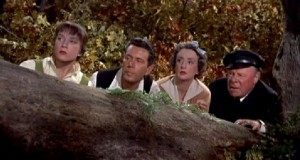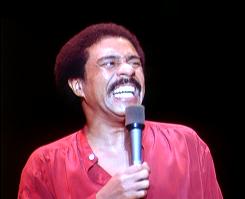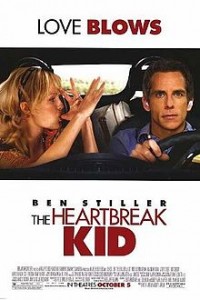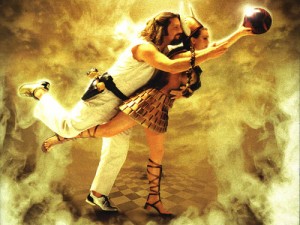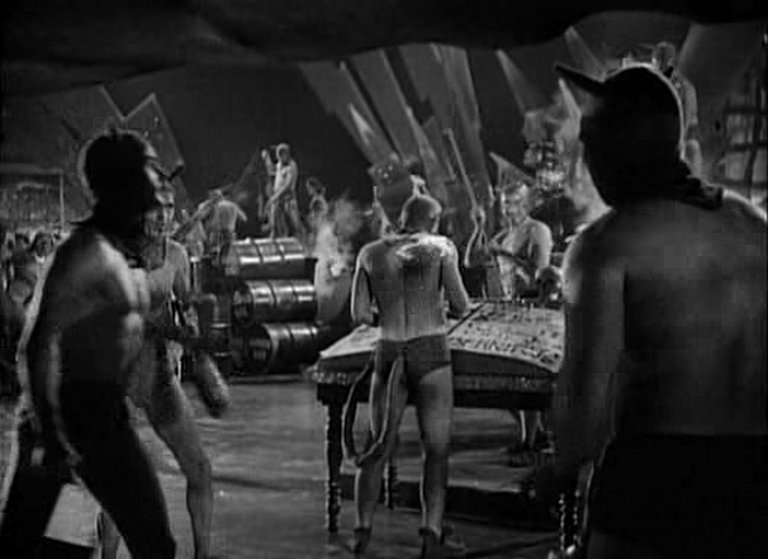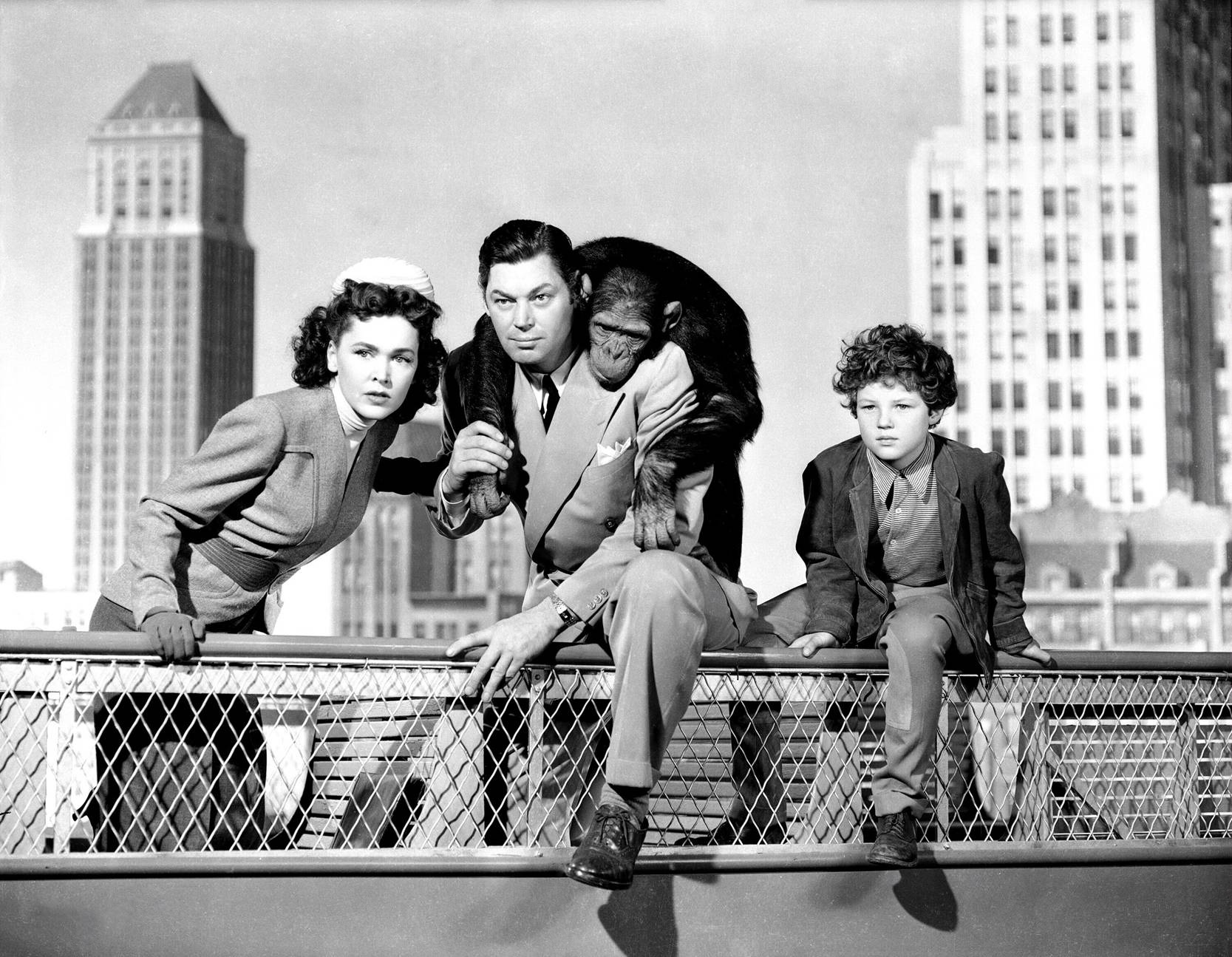This is my Introduction to The Unquiet American: Transgressive Comedies from the U.S., a catalogue/ collection put together to accompany a film series at the Austrian Filmmuseum and the Viennale in Autumn 2009. — J.R.
I cannot tell a lie: the initial concept and impulse behind this retrospective weren’t my own. More precisely, they grew out of a series of email exchanges between myself and Hans Hurch and/or Alexander Horwath last April. Everything started when Hans proposed that I select a program devoted to American film comedy, “not as a history or anthology of the genre but in a more open and at the same time more concrete way…not [to] just dedicate it to comedy as such but to various aspects, different forms, ideas, and functions of the comic – from the earliest works of American cinema to recent films.”
Over three months later, I think it’s safe to say that I’ve fulfilled this proposal, at least if one can accept a fairly loose definition of “earliest” (i.e., 1919 –- which is already a good quarter of a century into what might be described as the history of American film, describing my own limitations better than the limits of my subject.) As for the most recent films in the list, technically these are Idiocracy (2005) and My Son’s Wedding to My Sister-in-Law (2008), but psychologically and existentially I would probably pick Mr. Freedom (1969), for reasons explained below in the program notes, as the most “contemporary” film in the series, at least for an American with my political orientation.
One change that I’ve made in putting together this catalogue from previous catalogues in the same series (such as Jean-Pierre Gorin’s Der Weg Der Termiten: Beispiele eines Essayistischen Kinos 1909-2004 in October 2007 and Thom Andersen’s Los Angeles: Eine Stadt im Film/A City on Film in October 2008) has been to include only essays and program notes of my own, either reprinted (in the case of all the essays), sometimes with revisions, or newly written (in the case of 27, or roughly half, of the 55 program notes), rather than collect writings by others. This has been partially in order to clarify the reasons behind my selections, and partially because it is generally my habit as a critic to quote from other critics anyway whenever their observations seem relevant or helpful. But I have none the less emphasized in some cases the fact that the reprinted materials come from a variety of sources (written over a span of 33 years, for publication in three separate countries) by retaining in most cases their original formats and occasionally adding explanations of how they came to be written.
I should add that my acceptance of this commission -– both the selection of the films and the preparation of this catalogue -– came only after I overcame a certain amount of resistance. My first reaction was to regard the category of “American comedy” as a straitjacket, and I initially countered the proposal of Hans and Alex with a few of my own.
One idea was to call the series “Comedy and the United States” and mix American and non-American films, “employing comic elements in which the image, fact, or presence of the U.S. becomes significant, e.g., Ozu’s Good Morning, Jacques Tati’s Playtime, Jia Zhangke’s The World, Alain Resnais’ Pas sur la bouche, Edward Yang’s A Brighter Summer Day, Wu Nien-jen’s Buddha Bless America.” Another was to discard the comic element and devote the series to (a) the various ways that the world outside America views America, and (b) the various ways America views other parts of the world, “which could entail everything from, say, Sylvia Scarlett to The Bitter Tea of General Yen.”
Alex and Hans responded politely but firmly that they weren’t interested in either of these suggestions. As they emailed me jointly, “When discussing everything again in detail, we came to the conclusion that the (also politically) sharpest way to go at it is to really stay with American cinema only and to focus on those qualities of ’the comic’ that allow American artists/directors/comedians to speak about American culture, politics, and social life in an enlightening and critical way that’s specific both to the comic form and to America.” They even went further and mapped out some of the broader categories they had in mind: comic avant-garde and independent films, the animation of such figures as Tex Avery and Chuck Jones and how this related to Frank Tashlin and Jerry Lewis, artists or groups of films that were practically unknown in Europe (Alex cited Elaine May, Albert Brooks, and Allan Dwan’s comedies of the 1940s), and lowbrow, vulgar forms of comedy “that talked more clearly about socio-political issues than any other genre”, without of course forgetting such pioneers as the silent slapstick artists, Ernst Lubitsch, the Marx Brothers, and Preston Sturges. But they also insisted and held firm to the premise that the choice of films would be entirely and exclusively mine.
I was tempted by their proposal, and eventually I agreed to it, but various roadblocks stood in the way, most of them either logistical or ideological. Some of my hesitation was strictly a matter of practical considerations –- the fact that even though part of my program would be featured at the Viennale, a prior teaching commitment during the same period would make it impossible to attend the festival. But a more significant part of my resistance was frankly both temperamental and ideological -– a reluctance to restrict myself to “American cinema” after living through eight years of American separatism and exceptionalism as propounded and promulgated by the administration of George W. Bush. This was a position that refused to regard the United States as part of any world community and insisted on making its preferences the compulsory law for all other countries
-– a supposed beacon for “freedom” and “justice” that seemed quite willing to arrest and torture innocent Iraqis if it couldn’t round up enough certifiable terrorists in their stead, meanwhile hypocritically claiming to be fighting a “war” when in fact it was imposing a military occupation. This was also a country with a profound lack of curiosity about the remainder of the world (which it professed to understand perfectly) –- including, for example, all of the 2,749 citizens of 87 countries who got killed in the September 11, 2001 attack on the World Trade Center (which it preferred to regard as an attack on only one country -– thus essentially confirming the blind fanaticism and symbolic delusions of the terrorists while thoughtfully screening out the 86 other countries represented). And this was largely the same culture (if not precisely the same country, or the same population) that chose -– during the preparation of this catalogue, in late June -– to suspend virtually two weeks of world news coverage on national television for the sake of endless tributes to the recently deceased Michael Jackson, many of these profitable spinoff business ventures.
Please forgive me for all this ranting. It’s merely an attempt to describe what has in recent years made me, an American, a bit sick of anything having to do with “America,” a country already transfixed so narcissistically and monolithically on its own image, especially when so many lies are told and so many products are promoted on its behalf. This is why, several years ago, I also objected to my friend and colleague Gerald Peary making a feature-length documentary about American film criticism, thereby unnecessarily severing its roots and its connections with film criticism in the rest of the world.
But I should be more specific in clarifying my theoretical objection to Hans and Alex’s proposal, which was and is principally distinct from all of this.What I find most disagreeable about promoting still further the national cinema that is already monopolizing most of the world market in cinema isn’t so much an objection to the United States per se -– a country that is, after all, too large and too various to be identified exclusively with the bullying ignorance of some of its leaders or the expedient cynicism of its media. It isn’t even an objection to “American cinema” as a particularly strong example of nationalistic cinema. (Eleven years ago, I conceded in the Chicago Reader, while listing my one hundred favorite American features -– see http://www.jonathanrosenbaum.net/?cat=9 – that “of all the national cinemas I know, the American cinema is almost certainly the richest.”) My objection, much broader than that, is more to the very act of defining cinema nationalistically, and thinking about it too automatically and too often in those terms, to the exclusion of many other categories, especially during a period when more international options are becoming available in relation to both the Internet and the distribution of DVDs. I’ve argued elsewhere, for instance, that what’s most interesting and important about the films of Abbas Kiarostami during the 1990s isn’t necessarily what they tell us about Iran; it may be what they’re telling us about the world during that period. And even when it comes to a more politically conscious filmmaker such as Jia Zhangke, no matter how much he may have to tell us about the current state of mainland China, we needlessly restrict ourselves if we assume that this is all he has to say. To put it simply, The World is also aboutthe world.
I could cite related problems with “American cinema” as a concept to be projected systematically and uncritically into the future. Whatever its value continues to be in relation to the past, as a cataloguing principle serving film history (which is mainly how I hope the concept is being used in “The Unquiet American”), it is already becoming a little dated in relation to the recent past, the present, and the probable future. In a book I published nine years ago, Movie Wars: How Hollywood and the Media Limit What Films We Can See, the subtitle of my eighth chapter, which focuses largely on Paul Verhoeven’s Starship Troopers, even dares to ask the question, “Does American Cinema Still Exist?” And two chapters earlier, I bemoaned the inclusion on the American Film Institute’s 1998 list of the “100 greatest American movies” such British films as Lawrence of Arabia (no. 5), The Bridge on the River Kwai (no. 13), Doctor Zhivago (no. 39), and The Third Man (no. 57), — calling this “a gesture no doubt of unconscious imperialism on the part of those polled, apparently justified by the tentacles of American finance and/or a few Hollywood actors.” Nor was this an isolated aberration; the previous summer, for a retrospective of “neglected” American films selected by American directors that was held at the Locarno International Film Festival, Steven Spielberg had insisted on choosing Lawrence of Arabia, even after he was reminded that it wasn’t American (and begging the question of whether this film really deserves to be called “neglected”.)
The issue of “American cinema” today isn’t only, in many cases, an untested concept carried over from a previous era (like so much of the inadequate language we use), but a denial of the present-day realities of multinational funding and ownership and other issues of globalization, including many coproductions. In recent years, it’s often been my conviction that national distinctions often tend to function largely as assertions of property rights -– and when it comes to cinema, the property in question belongs not to the audience but to the film industry, most of which and most of whom couldn’t care less about either the art form or the audience. Countries, in short, are often euphemistic definitions of territories, to be carved up by various vendors like so many segregated ghettos (or “targets”).
I realize that I’m being cranky in my arguments –- and even paradoxically behaving like a cranky (and unquiet) American. After all, I was asked to program a series in Austria, not in the U.S., where the interests and inclinations of the audience are bound to be somewhat different from those in my own country. But this is another way of saying that much of the best of “American cinema,” “American art,” and “American criticism,” insofar as it merits being described as such, is ultimately a form of self-examination. And part of the overall aim of this retrospective is to try to say something about the American character, both positively and negatively, as a “loud” and disruptive force, both in the world outside and within its own borders — to study this (mainly) out-of-control character, both critically and appreciatively, and also to represent it in various ways.
Needless to say, this entails a few films that are ideologically and/or aesthetically reprehensible (e.g., The Three Caballeros, Turnabout) while still being worthy of interest in various other ways –- although for the most part these are particular favorites, most of them neglected, that I have fewer misgivings about. Overall the main criteria have been fun and edification — or put slightly differently, pleasure and enlightenment. And, since they are comedies, whether or not I find them funny is also important. But it’s important to bear in mind that there were no preset criteria for my inclusions.When readers in the past have asked me what my criteria are as a film reviewer, I usually like to respond that imposing any criteria essentially means foreclosing certain possibilities in advance — which suggests that it’s the works themselves (or at least the best and most original works) rather than the critics that should be suggesting the criteria. As I see it, it’s the job of critics to assist discussions about films, not to end them.
As the son and grandson of small-town film exhibitors, I grew up seeing practically every film released in Hollywood during the 1950s, although I only grew to understand the art of American cinema in any detail after I moved to Paris at the end of the 1960s and lived there for five years, and then went on to spend two and a half more years in London, achieving a certain distance from material that was already familiar to me at the same time that I was rediscovering it through foreign eyes. So the way I’ve eventually managed to accept the invitation of Alex and Hans has been to keep the focus of this series, including its presentation here, scattered and unruly and inconsistent even in its diversity, at the same time that my selection has been both critical and personal.
My title for the series is intended as a spin on the title of Graham Greene’s anti-American novel The Quiet American (1955), subsequently adapted into quite different films by Joseph L. Mankiewicz in 1958 (who virtually reversed some of the biases of the original) and by Phillip Noyce in 2002 — referring in both cases to a well-intentioned American idealist, a quiet Bostonian and Unitarian, who arguably and unwittingly perpetrates a certain amount of deadly mischief in Vietnam. Three years later, another novel set in Southeast Asia, by William J. Lederer and Eugene Burdick (also subsequently made into a movie, with Marlon Brando), called itself The Ugly American — a riff on Greene’s title that implied the same sort of Yankee tomfoolery in the same part of the world.
In fact, Noyce’s feature, much closer to Greene’s novel than Mankiewicz’s, was completed in 2001 but held back from American release by its distributor, Miramax, and then reportedly censored by them, on the assumption that Americans who considered the terrorist attacks of September 11, 2001 unprovoked would find any criticism of their country’s overseas behavior half a century earlier unwarranted and impermissible.
But by this time, one might say that the real-life “Ugly Americans” abroad were no longer being very quiet or modest about their ignorance but had actually become loud and boastful about it. And this is what finally suggested my title, positing a kind of reckless, unbridled, and often solipsistic American spirit, at once exhilarating and dangerous, spreading anarchy, chaos, and other kinds of transgressive messes wherever it goes.
At various points in the putting together of my selection, various questions came up from Alex, Hans, and other friends. Since some of these same questions might be posed by some of the readers of this Introduction, here are a few of them, with my answers. (In a few cases, no one has asked me these particular questions, but I pose them just the same.)
1. Question: Why are no Chaplin films included? “Wasn’t he a pretty transgressive artist, more often than not? We were thinking [of] Monsieur Verdoux or A King in New York [or even] Modern Times…]”) And what about the absence, for that matter, of any Michael Snow films? After all, his Breakfast, So Is This, and *Corpus Callosum are all pretty hilarious at times.
Answer: I don’t regard Chaplin as an American filmmaker. (Alfred Hitchcock, I would argue, is somewhat more debatable — and I did consider including The Trouble with Harry and/or Family Plot at various points.) It’s even part of Chaplin’s greatness to transcend nationality and to make truly international films. Technically, most of his films were made in the U.S. (although not, I hasten to add, A King in New York). But existentially, they aren’t American -– in the same way that Citizen Kane may be technically a Hollywood studio film, but existentially it’s an American independent feature. Monsieur Verdoux, a very great film, has absolutely nothing to do with Americans, unquiet or otherwise, and City Lights (my own favorite of the Tramp features) could just as easily be set in a European or a U.S. city, which is also basically true of Modern Times. For this reason, the only Chaplin film I seriously considered for this series is The Immigrant, but then I decided that this would be forcing the issue just in order to include a Chaplin film, because The Immigrant isn’t specifically American in its treatment, only in its subject matter. So the reason for omitting Chaplin is conceptual.
Including a Chaplin feature would vulgarize the conceptual basis of the series, the same way that including a Michael Snow or a Chantal Akerman film shot in the U.S. (such as Wavelength, Back and Forth, Hotel Monterey, or News from Home) in a program of American experimental films would add a touch of imperialism, conscious or not. The Snow films are Canadian, not American, and those by Akerman are Belgian. Chaplin films are at most (and at best) only Chaplinian.
2. Question: What about the Coen brothers, the Farrelly brothers, South Park, Mel Brooks, Jim Carrey, Sacha Baron Cohen, Will Ferrell, Richard Pryor, and Adam Sandler?
Answer: Critical taste is of course just as much a matter of exclusions as it is of inclusions. But in the case of Pryor, one of the cornerstones of the series as it was initially planned, Richard Pryor Live in Concert (1979), had to be eliminated from the public program because its copyright holders, for obscure reasons (apart from what might have been a paranoid suspicion that foreigners on the other side of the Atlantic can’t be trusted with prints), wouldn’t agree to send a copy of the film. For those who would like to follow my original design, however, it’s worth pointing out that, as I write this in late July, DVDs of this film can be purchased from Amazon in the U.S. for only $8.49, and the essay I originally intended forthis catalogue can be found on my web site at http://www.jonathanrosenbaum.net/?cat=5.
Indeed, insofar as this program would benefit from becoming interactive — that is to say, a function of the initiatives of the reader and viewer that go beyond the initiatives of the Austrian FilmMuseum and the Viennale -— I would urge an adoption of the attitude that the retrospective can’t and shouldn’t be limited to a series of public screenings and the catalogue that you’re holding.
I did toy briefly with the possibility of including the Farrellys’ There’s Something About Mary (1998) or Stuck on You (2003) in the retrospective, but then I figured that the inexcusably awful and offensive 2007 remake of The Heartbreak Kid that they produced retroactively disqualified even the few movies of theirs that I once considered halfway decent. By way of further explanation, here is my capsule review from the Chicago Reader:
“I’d like to think Elaine May had it written into her contract that the Farrelly brothers could remake her most brilliant comedy (1972) if they left her name out of the press materials. She’s lucky to go uncredited (Neil Simon, who wrote the original script, is less fortunate), because you can’t do character-driven comedy without characters, and this one has only grotesques who change traits from moment to moment. Given the joyless vulgarity and absence of laughs, the frenzied changes in locales and character types hardly matter. A guy who sells sporting goods (Ben Stiller) gets married, drives south with his bride (Malin Akerman) on their honeymoon, and promptly falls in love with another woman (Michelle Monaghan) while discovering he hates his wife, but the ethnic humor that gave May’s movie its charge is replaced by crass mean-spiritedness. If I were in movie hell, I’d rather see Good Luck Chuck again than return to this atrocity.”
Anyway, it’s not as if Farrelly brothers comedies -– or the Coens’ The Big Lebowski (the only film of theirs I ever considered) –- are hiding under rocks; I daresay even a good many Austrians already know about them. The same thing applies to Eternal Sunshine of the Spotless Mind and, to a lesser extent, The Cable Guy (probably the two most interesting Jim Carrey pictures), not to mention such worthy but familiar items as Dr. Strangelove and Who Framed Roger Rabbit?
As for Will Ferrell, at least I can say that Stranger Than Fiction was one of my alternate choices. (So, for that matter, was Mel Brooks’ History of the World: Part 1.) But the closest I ever got to considering Sandler was a few fleeting thoughts about Punch-Drunk Love and Spanglish. (I wound up leaving out all of James L. Brooks comedies, despite my conviction that he tends to be undervalued by cinephiles, after pondering the paradox that by far the best of his movies — the musical version of I’ll Do Anything — has never been released to the public, having been foolishly deprived of all its musical numbers by Brooks himself after a long series of test-market screenings; what remains of this film, alas, is only a shell of the original.) More generally, as I state in my program notes, the only concession I’ve made to the recent vogue in gross-out, bad-taste comedies as well as to comedies predicated on their characters’ stupidity is Idiocracy, which strikes me as being more good-hearted and less snobbish than the one-upmanship of the Coens or of Sacha Baron Cohen (although the latter has admittedly developed an interesting sort of aggressive, activist agit-prop of baiting and then skewering his audience). As for South Park, it just isn’t my taste.
3. Question: Why did you include only one feature each by Ernest Lubitsch, Jerry Lewis, and Joe Dante when there are two features each by Albert Brooks, Howard Hawks, Buster Keaton, Elaine May, Frank Tashlin, John Waters, and Billy Wilder – not to mention two features with Jerry Lewis, two shorts each by Chuck Jones and Owen Land, two shorts (one silent and one sound) with Laurel and Hardy, a feature and a short (film and video, respectively) by JimMcBride, and no less than three Tex Avery cartoons?
Answer: No slur of any kind on Lubitsch, Lewis, or Dante is intended; far from it. A lot of the selections had to do with fitting particular films into the five categories I dreamed up, and some other alternate choices, all of which I hated to omit, includedDante’s The Second Civil War, Lewis’s Which Way to the Front?, and Lubitsch’s Trouble in Paradise. I’m especially disappointed that Dante -– perhaps the most neglected and least well known among contemporary American comic directors –- is represented by only one feature. But I should add that Lubitsch was generally much more tender towards Americans, quiet and unquiet, than Wilder, his protégé, with the result that the only Lubitsch film I’ve included is far from typical and not really one of his best, although it remains fascinating for numerous reasons. (I suppose the same argument could be made regarding Steven Spielberg and 1941 -– with Robert Zemeckis and Bob Gale serving the same function here as Wilder and Charles Brackett did for Lubitsch on Bluebeard’s Eighth Wife, by exposing the dark underside of their director’s usual good humor. With this distinction in mind, if I’d wanted to expand on this misanthropic, nihilistic strain in American comedy any further, I could have also included Zemeckis’s 1980 Used Cars, which Gale also coscripted.)
At this point, I might as well list all of my other alternative choices considered for this program, most of which qualify as neglected gems of one sort or another: Born in East L.A. (Cheech Marin, 1987), Find Me Guilty (Sidney Lumet, 2006), The First Time (Frank Tashlin, 1952), Hellzapoppin’ (H.C. Potter, 1941), Looking for Comedy in the Muslim World (Albert Brooks, 2005), The Palm Beach Story (Preston Sturges, 1942), Raw Nerves: A Lacanian Thriller (Manuel De Landa, 1980), Ruggles of Red Gap (Leo McCarey, 1935), Screwball Squirrel (Tex Avery, 1944), Such Good Friends (Otto Preminger, 1971), Tarzan’s New York Adventure (Richard Thorpe, 1942), and Wise Blood (John Huston, 1979). (Hellzapoppin’, the most obvious choice, is far better known today outside the U.S. than inside, where rights issues have kept it off the market for many decades.) Broadly speaking, I value these dozen films as much as the 55 that I picked; I just couldn’t find room for them. (For further edification about why I value these films, my web site at www.jonathanrosenbaum includes reviews about several of them.) And there are still others that are no less worthy, starting with Albert Brooks’s Modern Romance (1981) and Joe Dante’s Small Soldiers (1998).
I should add that many of the films that I did include are intended to comment on each other in various ways. This is perhaps most obvious when there are two films by the same director (or writer-director). For example, it is interesting to view Kiss Me Stupid and Avanti! as comedies that, for all their striking stylistic and thematic differences, both have interesting and pertinent things to say in comparing American culture and Italian culture –- even though, in the case of the former and earlier film, this is Italian-American culture as embodied by Dean Martin. Artists and Models and Will Success Spoil Rock Hunter?, the two Tashlin films, might be seen as complementary mid-1950s investigations of two media industries, comic books and advertising; Brooks’s Real Life and Lost in America are both comedies that hinge largely on the hero’s alienation from the “reality” of ordinary Middle-American life; Hawks’s Monkey Business and Gentlemen Prefer Blondes employ some of the same actors (Marilyn Monroe, Charles Coburn, George Winslow) and play with similar comic notions of the infantile and cartoon-like forms of stylization; the two Keaton comedies are both adroit mixtures of certain realities and certain forms of fantasy about everyday American life; May’s The Heartbreak Kid and Ishtar both involve betrayals of partners (a marriage couple and best friends who form a musical duo) hat develop when they take adventurous trip. Waters’ Female Trouble and Hairspray postulate two forms of rebellion against the American heartland (specifically Baltimore, Waters’ home town) in relation to fame and celebrity; and the labyrinthine narrative coda of McBride’s fictional Hot Times might be said to dovetail into the labyrinthine personal family details of his non-fictional My Son’s Wedding to My Sister-in-Law 34 years later.
4. Question: Regarding the five categories that you already mentioned, one can be pretty skeptical about how suitable or relevant some of these are. How much, after all, do Gentlemen Prefer Blondes and The Fountain of Youth really have to say about “Americans abroad”?
Answer: Very little, I admit. This is the problem with inventing categories. In fact, although there’s a certain amount of comedy in all 13 of Orson Welles’s completed features, and a large number of his unfilmed projects were comedies as well, the only pure comedy he ever completed and showed during his lifetime was The Fountain of Youth, his first TV pilot, which I couldn’t imagine not including in this series (because it tends to be so neglected, and because I regard it as a major work); so the task of figuring out a way to classify it, while difficult, was none the less a secondary issue. As for Gentlemen Prefer Blondes –- which bears a striking resemblance to many of the satires of Frank Tashlin about capitalism and eroticism,both as separate subjects and in relation to one another, and which can also be cross-referenced with animated cartoons –- this is a case of a film that could easily have wound up in several of my chosen categories.
In closing, here are a few explanatory remarks about the texts that follow:
(1) As stated earlier, all of the essays and about half of the program notes were written previously, for other occasions and publications, and it seems important to stress some of the original contexts for these texts rather than alter or distort them by trying to make them all adhere to the same format. It’s important to point out, for instance, that the essays on Elaine May and Albert Brooks were both commissioned by the official monthly magazine published by the Writers Guild of America, Written By (which is why both of them give particular emphasis to their writer-director-performers as writers), although the essay on Brooks has never appeared in print before, for a rather silly reason: The article was meant to appear around the same time that Brooks’s sixth feature, The Muse (1999), would be released (he has subsequently made only one more since then, Looking For Comedy in the Muslim World, in 2005). But when I asked his agent if I could see this film in advance, he replied that I could do so only if Written By promised to make the article the cover story of that issue. Written By replied that they didn’t make deals of this kind, so they politely paid me in full for the commissioned article, but, for understandable reasons, didn’t run the article because it would obviously seem out of date if it appeared at the same time as The Muse yet didn’t comment on it. (I subsequently reviewed both The Muse and Looking for Comedy in the Muslim World at length in the Chicago Reader, the latter in conjunction with Hou Hsiao-hsien’s Café Lumiere, and these reviews can be accessed online at www.jonathanrosenbaum.com/?p=6458 and www.jonathanrosenbaum.com/?p=5887.)
Three of the program notes are reviews originally published in Monthly Film Bulletin, a state-supported magazine published by the British Film Institute where I served as assistant editor for two and a half years in the mid-1970s. This magazine, which reviewed every feature film released in London and a selection of the short films released, was eventually “absorbed” into Sight and Sound after the latter magazine changed from a quarterly to a monthly publication in 1991, after 687 issues, and I’m sorry to say it has subsequently lost much of its value as a singular reference source for film credits. (Richard Combs, its editor for over 15 years, wryly characterized and commemorated its demise by placing an apocalyptic still of machine-gun slaughter on the cover of its final issue, which he labeled, “Redemption & resolution in The Godfather Part III.”) Thus the desire to give such a detailed account of the credits of a softcore sex film as well as Jim McBride’s career at that point wasn’t so much exceptional as a routine part of my job, and I find it lamentable that there’s scant evidence of this kind of historiography in most film publications today.
(2) All of the program notes that were originally capsule reviews for the Chicago Reader are undated because it’s impossible to trace their dates in most cases: many were subsequently rewritten or abbreviated at times that were equally unrecorded, so assigning dates to them could be done only through unreliable guesswork.
Jonathan Rosenbaum
Chicago, Illinois
July 27, 2009







